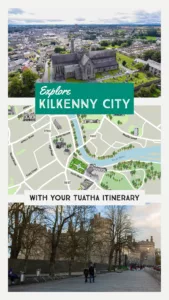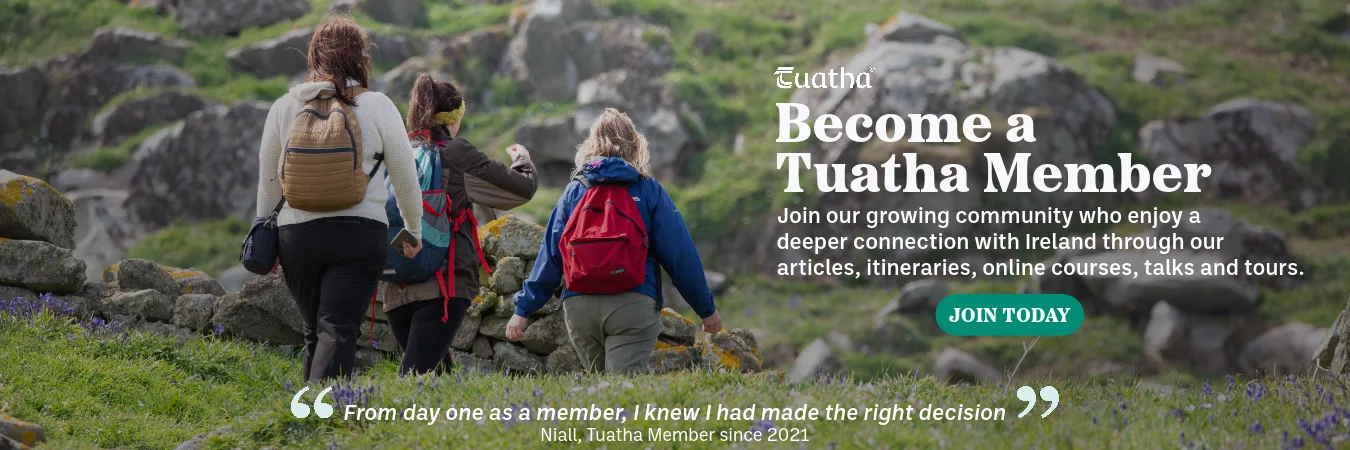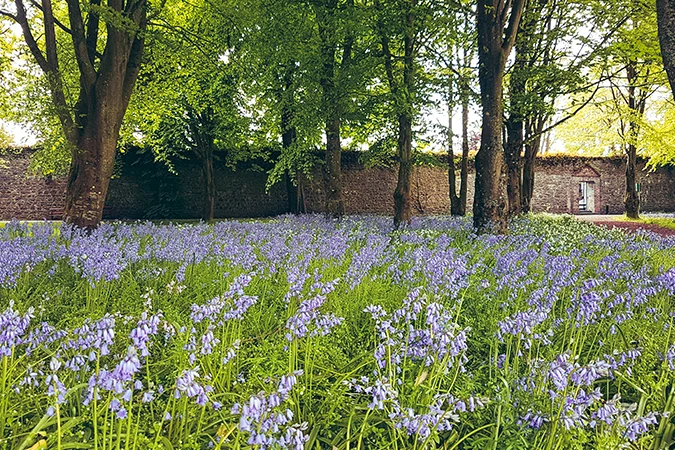Kilkenny Castle
Today Kilkenny Castle has become one of Ireland’s most popular heritage sites. It is visited by hundreds of thousands of tourists every year, who enjoy the beautiful parklands and the grandeur of this former home of the Butler family. However, the castle that we know so well today is largely the result of centuries of development and renovation as each generation sought to tailor Kilkenny Castle to suit their needs. The story of the castle begins with an earthen fort, before the great William Marshal constructed the first stone fortress. Kilkenny Castle has had many roles throughout its history. It has been at the centre of Irish government when it temporarily became the capital of the Irish Confederacy, it has been besieged, and it has been an elegant and grand home to one of Ireland’s leading families. Today visitors to Kilkenny Castle can enjoy a walk through the lovely castle park, and a guided tour, that gives you a great sense of the history of the castle and the Butler family that lived there for over 600 years.
Read on to dig deeper into the history of Kilkenny Castle.
For practical information about visiting this site Click Here
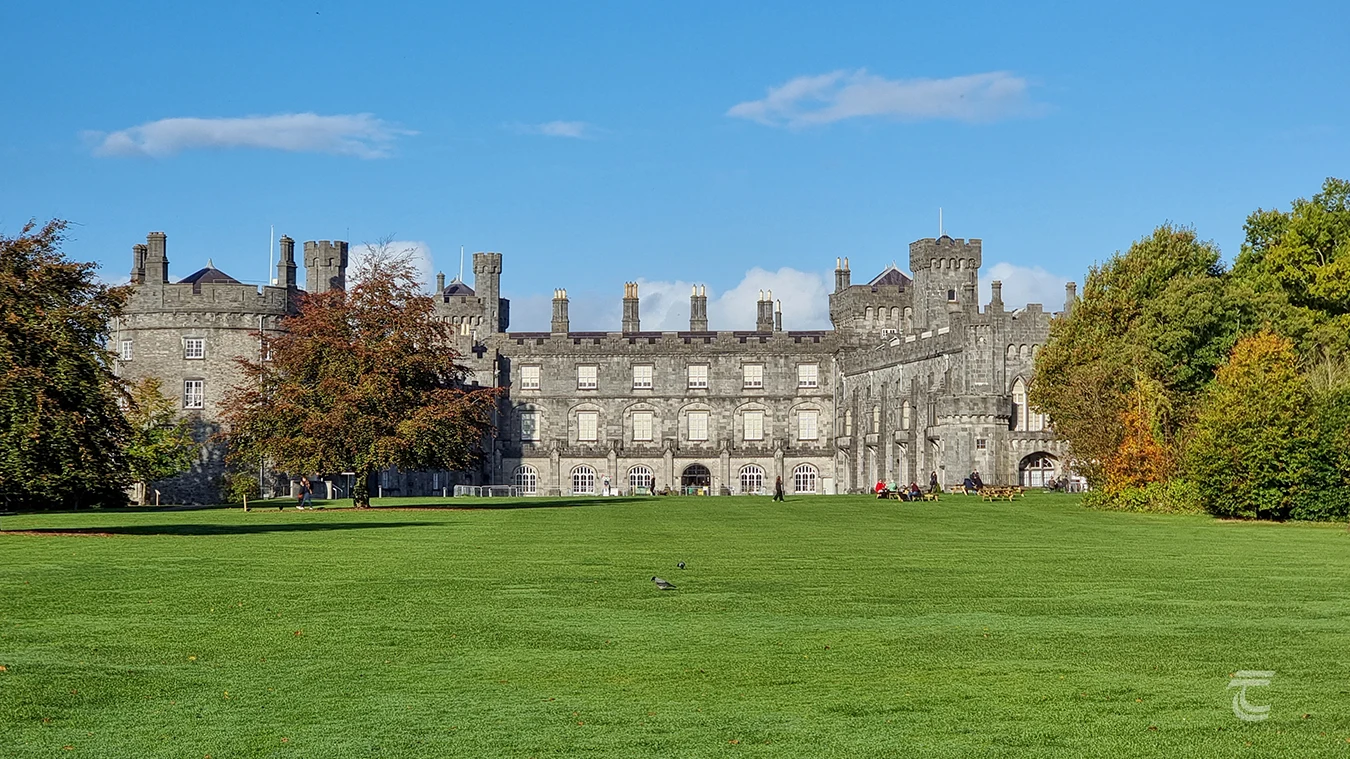
Kilkenny Castle • Kilkenny
The History of Kilkenny Castle

The River Nore below the castle • Kilkenny
The Early History of Kilkenny Castle
There were important settlements at Kilkenny long before the castle. This area was a base of the MacGiolla Phadraig dynasty, along with a significant early monastery (located where St Canice’s Cathedral stands today). The earliest origins of Kilkenny Castle began with an earth and timber fortification built by the famous Richard de Clare, known as Strongbow, the leader of the Anglo-Norman invasions of Ireland. This was established in around 1173 on a prominence that commanded an important crossing point of the River Nore. Though strategically located, this first fort did not survive long, as it was destroyed that same year by Domhnall Ó Briain, King of Thomond. As recorded in the Annals of Tigernach:
‘A hosting [was led] by Domhnall Ó Briain to attack the castle of Kilkenny and the Foreigners who dwelled therein. Along with him was a battalion from the west of Connacht, sent by Ruaidhrí, King of Ireland, with Conchobhar, Ruaidhrí’s son. These tidings were heard by the Foreigners. They evacuated the castle of Kilkenny and came to Waterford. The town [Kilkenny] was breached after the Foreigners left it, and the whole district was plundered. That reduction was a grief to the Foreigners of Ireland’.

The River Nore below the castle • Kilkenny
William Marshal and Isabel de Clare
Following the death of de Clare in 1176, his estates, along with the Lordship of Leinster, eventually passed to Isabel, heiress and daughter of de Clare and Aoife Mac Murchada upon her marriage to William Marshal. William Marshal (1146–1219), was undoubtedly one of the most influential figures in Irish history. He was a renowned and fearless knight, and a prolific builder who built castles, towns and abbeys across his vast territories in Ireland, Wales, England and Normandy.

The grave effigy of William Marshal • Temple Church, London
It was Marshal who instigated the construction of Kilkenny Castle as we know it today. Work presumably began in the period between 1207–1213, under the eye of Marshal himself. At this point, the Earl had fallen out of favour with King John, and was unwelcome at royal court. He used this time to transform Kilkenny into the political capital of the Lordship of Leinster, with his new castle at Kilkenny as the focal point.
He designed Kilkenny Castle in a roughly trapezoidal shape in plan, with four large circular towers at each corner (only three of which still stand today). Unlike some of its contemporary castles, like Trim Castle or Maynooth, Kilkenny Castle had no keep or donjon, the large central tower that formed a last-line of defence as well as being the usual dwelling of the lord. Instead, the castle relied upon its strong enclosing walls, protected by each of the massive towers that offered overlapping fields of fire for the archers. The castle also had a deep moat, and a well defended gate.
The medieval aspects of Kilkenny City that so attracts visitors today, have their origins in this development of Kilkenny Castle. Under his patronage, both Kilkenny Castle and St Canice’s Cathedral were developed, joined by one long street, which later became known as High Street and Parliament Street. This became like the medieval spine of the burgeoning settlement, with long and thin burgage plots that extended laterally out like ribs from the spine. This was following a more Continental model of development. Sadly over the years much development happened in the medieval burgage plots, and today only the plot of Rothe House survives relatively intact.
However, much of the development of Kilkenny, and indeed the whole Lordship of Leinster, was likely to have been down to the vision and efforts of Isabel, who was a key figure in medieval Ireland. Between them, Isabel and William reshaped Leinster. They endowed abbeys and churches like Tintern and Duiske and castles like Carlow and Ferns. They brought in settlers from England, Wales and Flanders. They founded boroughs, settlements, ports and towns like New Ross.
William Marshal died in 1219, and Isabel just a year later in 1220. Their estates passed to their son William, who became a great magnate in his own right. After his death in 1231, the castle and town were assigned, in succession, to the estates of his four younger brothers, who famously all died without male issue. The lands and estates were then divided among the daughters of William and Isabel. Kilkenny Castle eventually passed to the Barons le Despencer, who sold it to James Butler, the third Earl of Ormond, thus beginning the key association of Kilkenny Castle with the Butler family.
The Butlers
For over 600 years Kilkenny Castle was the seat of the Butlers, one of the most powerful families in the history of medieval Ireland. They first arrived here in 1185, when Theobald FitzWalter accompanied Prince John on his tour of the country. FitzWalter was a great favourite of the crown, and was distinguished with the Norman title ‘boteillier’, meaning it was their honour to pour the first cup of wine for the King at grand events and banquets. The family took this honour seriously, cups are displayed on the family crest, and the title boteillier became the name Butler. There was real material gain along with the ceremonial title, as they were given the Prisage of Wine that entitled them to a 15% tax of all wine imported into Ireland. This made the family extremely wealthy, and through strategic marriages they embedded themselves in the very highest ranks of society. One famous descendent of the family was England’s Queen Elizabeth Ist, who was a great-granddaughter of the Butlers through her mother Anne Boleyn.
The Siege of Kilkenny Castle
Kilkenny was the capital of the Irish Confederacy from 1642, as well as being the home of the Duke of Ormond who was one of the key leaders of the Confederacy. As such, Kilkenny was a vitally important and symbolic target for Cromwell and his army. They first isolated Kilkenny, by taking a number of towns nearby, including Gowran. However, even though it was isolated Kilkenny was still a formidable nut to crack. It was a strong walled town, broadly separated into three defendable districts. The strongest was Kilkenny Castle itself and the area known as hightown. Next was the area known as Irish Town, and the walled area of St John’s positioned on the far side of the Nore.
The Duke of Ormond and the Confederate Commissioners fled Kilkenny to the safety of King John’s Castle in Limerick. Unbeknownst to Cromwell, the garrison of Kilkenny had suffered badly from the plague. Less than a third of the original garrison of 1200 were still well enough to fight. Sir Walter Butler was given command of the defence, and concentrated his remaining professional soldiers in the defence of the castle and high town, leaving the other two districts to be defended by civilian militias.
Cromwell hoped to take Kilkenny City without a siege, he had bribed an Irish officer called Captain Tickell into agreeing to open the gates to Cromwell thus betraying the city, but the plot was discovered and Captain Tickell was hanged before he could open the gates. On the 22nd March 1650, Cromwell called on Sir Walter Butler to surrender, he refused and the siege of Kilkenny began.
Despite initial heroic successes by the civilian militias, Cromwell’s forces eventually successfully attacked Dean’s Gate and siezed St Canice’s Cathedral, and forced the defenders and townsfolk to flee. This was combined with an attack that crossed the River Nore to capture the St Johns area of the town, as they mustered to prepare to assault St Johns Bridge. Their first assault was thrown back, but when the artillery pounded the walls and created a breach, Walter Butler knew he had no choice but to surrender to avoid a massacre, such as had befallen Drogheda and Wexford. He discussed terms with Cromwell, who agreed to protect the citizens and their property and to allow Sir Walter Butler and his garrison to march out still bearing their weapons. These were very favourable terms indeed from the notoriously ruthless Cromwell.

The Gateway • Kilkenny Castle
From a medieval fortress to an elegant home – the later history of Kilkenny Castle
Kilkenny Castle entered a decline during the 18th century as James Butler the 2nd Duke of Ormonde was charged with treason for his involvement in a Jacobite rebellion against King William in 1715. He fled to France, his estates (including Kilkenny Castle) were forfeited to the crown. The castle fell into neglect, until Charles, Earl of Arran who was the brother of the exiled Duke was allowed to purchase the Castle in 1721 so he secured it as a legacy for the Butler family.
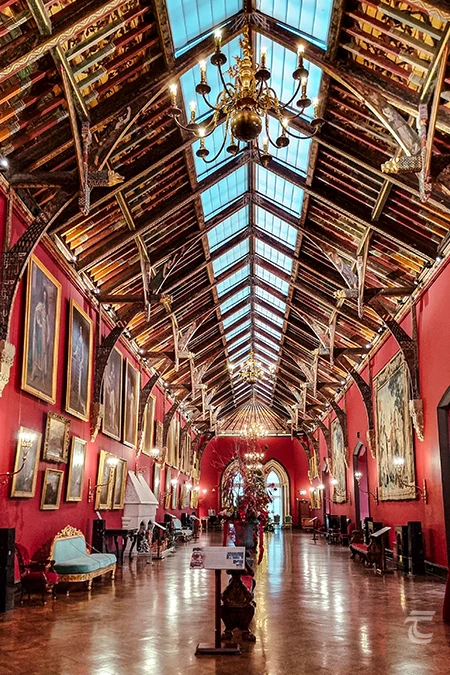
The Picture Gallery Wing • Kilkenny Castle
Eventually the Castle was passed to the flamboyant Walter Butler, who carried out a thorough overhaul of the castle in 1801–1803. He spent large sums to bring the dilapidated and dank castle to the height of fashion and luxury. It was at this time that the fine stables (now home to the Kilkenny Design Centre) were constructed. Perhaps the most dramatic change was the demolition of the medieval gateway and the southern curtain wall, along with a tower. Recent archaeological investigations led by Cóilín Ó Drisceoil uncovered the remains of the demolished wall, as well as a range of artefacts, including medieval pottery and a medieval harp tuning peg. The story of conflict at the castle was also revealed with a number of musket balls associated with Cromwell’s siege of the castle in 1650. You can hear more about the excavation in this episode of our Amplify Archaeology Podcast.
From around 1825, the castle was further transformed under the eye of Grace Louisa Staples, the Countess of Ormond, who employed the architect William Robertson to remodel the castle in the grand Baronial style that was fashionable at the time, and added the elaborate classical gateway that forms the main entrance to the castle today. The family invested a fortune on refurnishing and remodelling the interiors, and added to the already extensive art collection that was to be housed in the Picture Gallery Wing that was built on earlier foundations. Though there were structural issues with some of the remodelling, and more phases of renovation were carried out through the 19th century to make it a more comfortable, and even grander, home. When you visit the castle today you will see a variety of architectural styles and tastes, that sometimes don’t blend well in visual harmony, but instead together tell a story about the changing attitudes and wealth of the Butlers across generations.
The Butler family finally left Kilkenny Castle and auctioned the contents in a large sale in 1935. They sold the castle for a nominal fee of £50 to the people of Kilkenny in 1967. With the castle in state ownership, a thorough restoration was carried out by the Office of Public Works to return the castle to its former glory, allowing us as visitors today to enjoy the mixture of medieval fortress and luxurious stately home.
Upper left: the effigy of Conor Conor na Suidaine O’Brien • Lower left: the northern wall of the choir • Right: the effigy of an abbot
Top: the effigy of Conor Conor na Suidaine O’Brien • Middle: the effigy of an abbot • Bottom: the northern wall of the choir
